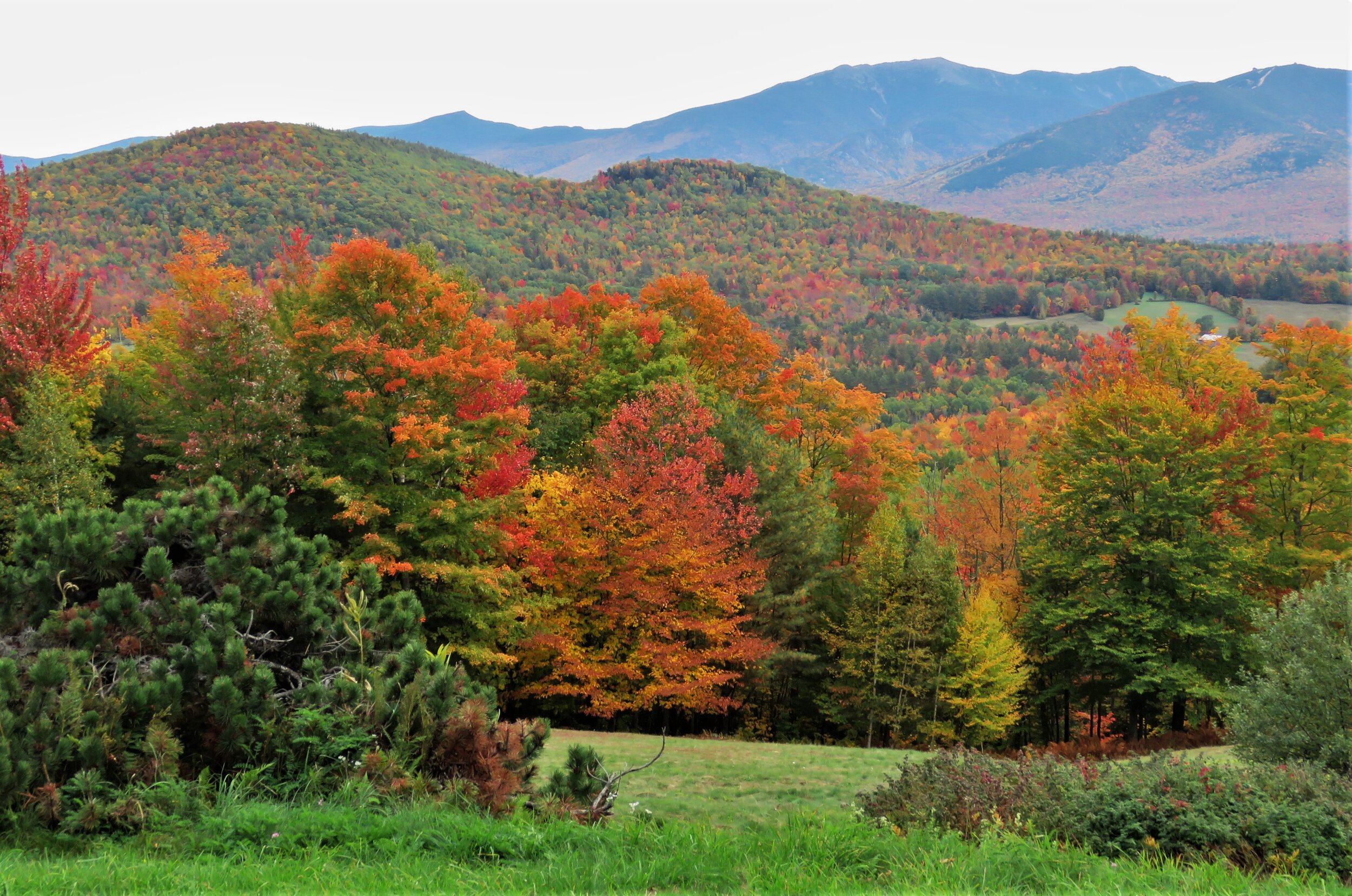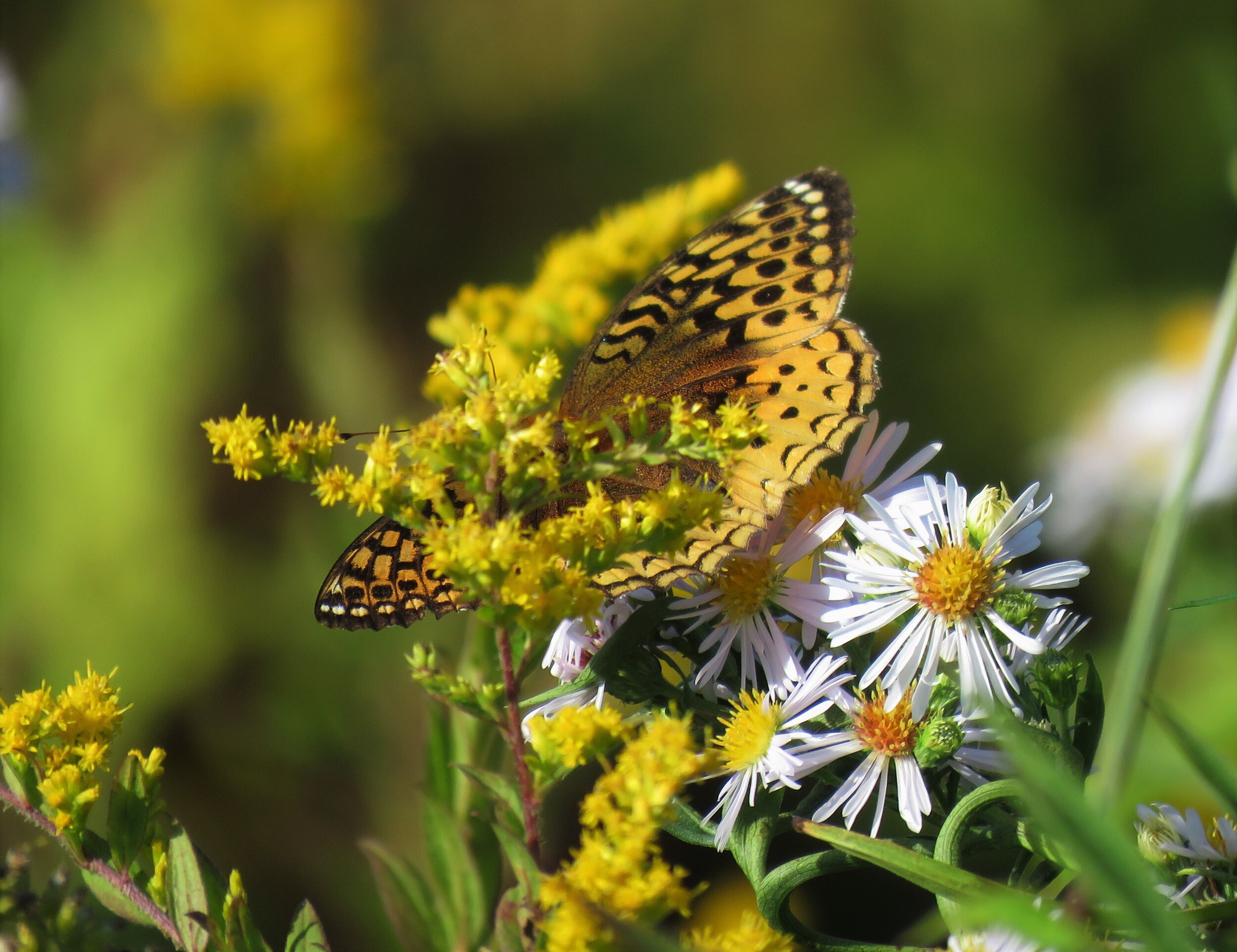Early Fall
Phenology – “a branch of science concerned with the relationship between climate and periodic biological phenomena (as the migration of birds or the flowering and fruiting of plants).
When does fall begin in the North Country? Is it when the first leaves turn red on the big maple across the street? No, that can happen at the end of July. Is it when the nights turn cold enough for two blankets and flannel pajamas? No, that happened weeks ago, and the 90-degree temperatures we later endured proved that mid-August is definitely still summer. Is it when the first apples ripen? Perhaps where you live, but definitely not here. I’ve already made two jars of apple sauce with apples from the earliest ripening wild apple tree in the Upper Meadow – and the temperature that day was still close to unbearable. How about fall foliage – is it fall when the leaves turning colors turn the hillsides into fantasies of color? Well, that certainly is fall, but by then it is late September, and we’re already talking about how great the weather has been, how exciting it’s been to see flocks of bluebirds assembling for their journey south, and how quiet it seems now that the tourists have gone. So, I think foliage is a highlight of early fall rather than a sign that fall has begun. So, despite my best intentions, and despite the title of this series of essays, I will go out on a limb and say that phenologists have yet to define a believable harbinger of fall. Let the robin and the woodcock vie for the honor of harbinger of spring, but I will declare that in the North Country, fall begins the day after Labor Day.
Photos and text by Carl D. Martland, a founding member of ACT and a long-time resident of Sugar Hill. Quotations from his journals indicate the date of and the situation depicted in each photograph.
Fruits, Flowers, and Foliage
Of course, brilliant colors do highlight the first weeks of the fall. Apples, crabapples, hawthorns, chokecherries, viburnum, and numerous other trees and shrubs produce vast quantities of colorful berries. Walking along a country road, you may see a whole range of colored berries, and a single striking leaf can merit a photo.
September 20, 2020. We took our usual late afternoon walk down Pear Lake Road, amazed by the variety and quantity of apples, crabapples and berries.
Spectacular displays of asters and goldenrods begin in August and continue through the first half of October, and they attract monarchs and other beautiful butterflies and insects.
September 3, 2019. Several species of fritillaries flitted around the clumps of aster that cover much of the dam. The largest is the great spangled fritillary, which covers several flowerheads with its wingspan of nearly three inches.
October 12, 2018. The asters are still magnificent in the field in Foss Woods, right as you walk in from Pearl Lake Road.
Lucky Sightings
Normally in these phenological essays, I try to show photos of what anyone might see in the North Country if they walk slowly through any forest or meadow or if they sit for a while by a pond or a wetland. However, if you always take a camera with you, if you walk slowly with your eyes wide open, and if you are lucky, then you sometimes will see something unusual. For example, I seldom see the otters that frequently come to our pond late at night or early in the morning pond seeking a bit of fresh trout more properly supplied for the neighborhood’s fly fishers. I often come across an otter’s scat on a path a few feet from the pond, full of fish scales establishing their guilt. But once in a great while, I have come across a pair enjoying themselves splashing around on a fine September day.
September 27, 2016, 60 degrees, partly cloudy, early morning fog burned off by 11am. A pair of otters were in the pond, diving, tumbling, and swimming underwater. At one point, they each barked, but they didn’t leave the pond. … When I went back to the pond at 3pm, the otters were still there.
On any nice day in September, a couple of painted turtles will either be sunning at the Point or floating in the mat of weeds that accumulate in the openings in the cattails. Once in a while, sometimes just once or twice a year, I will also see a snapping turtle in the pond, possibly only a few inches from a group of painted turtles. But these are not the only turtles to be found in the North Country or even in our pond. I know this because I once -and only once – took a picture of a wood turtle in the pond. Perhaps I’ve only seen one because they are usually found not in ponds, but on land near streams. A wood turtle’s shell is not smooth like a painted turtles, and it’s neck and forelimbs boast bright orange stripes.
September 17, 2017. I noticed this small turtle just a few feet away from the rocky outcropping at the end of the Point. He came up very slowly, took a couple of gulps, and scampered back down. I had time to take several photos before he disappeared back into the depths. Only after examining the photos did I realize that this was a wood turtle, not a painted turtle.
Another unusual sighting wildlife encounter occurred a few years ago when we walked along the Pondicherry rail trail, hoping to see a great blue heron, a hawk or two, some ducks, and flocks of migrating birds. Imagine our surprise when we happened upon a small, tan snake posing right there at the edge of the trail. Unlike the garter snakes commonly seen in our yard, this snake didn’t move at all for a few minutes. Close examination of my photos showed this to be a redbelly snake, a seldom-seen snake with a maximum length of 16 inches that is probably found throughout the state (see caption for source). I actually only identified this snake when preparing this essay, and it remains the only one of this species that I have ever seen.
October 5, 2016. This 12-inch-long snake was right at the edge of the rail trail as we walked out toward the ponds in Pondicherry National Wildlife Refuge.
“This species is probably found throughout the state, occurring in marshy areas as well as uplands.” James Taylor, The Amphibians and Reptiles of New Hampshire, NH Fish and Game Department, 1993, p. 58
Common Sightings
As noted above, garter snakes are commonly seen in yards and along trails. As the weather cools down, they seem to spend more time sunning, and they are not quite so quick to escape into the underbrush. I have even seen a large garter snake sunning in an open spot in the woods in the middle of November.
September 11, 2019. This garter snake apparently spends most of its time on our patio, often peaking out from under one of the old barrels now used as large flowerpots.
Small mammals spend a lot of time in the early fall looking for seeds and fruits to store for the winter. Red squirrels and chipmunks will pick up small apples and place them in the crook of a tree where they will be well above the snow. Mice return to their warm winter locations located somewhere below the stove in the kitchen or behind the bookcases in the hall. Bears will sit under an apple tree and eat and eat and eat, putting on weight and developing a healthy glow to their fur.
September 12, 2018. A chipmunk sits in an alder clump next to the pond. They are running to and fro every day in the early fall, but are seldom seen in the winter.
October 5, 2016. A red squirrel appears deep in thought on our patio. Probably trying to figure out how to get inside for the winter.
Meadowhawks and mosaic darners will still be seen in wheels or laying eggs at the edge of the pond throughout September and early October. As the season progresses, you may see some of the less common species, such as the spotted variety of the variable darner.
September 11, 2019, 74 degrees, 330 pm, cloudy. A pair of variable darners formed a wheel while the male held onto a dead cattail. The male of this species has blue markings, while the female has bright yellow markings. Instead of thoracic stripes, the spotted variety has two pairs of spots, which were clearly visible in the photograph that I took.
Canada darners are one of the most common mosaic darners, but they almost never land. They are best identified by their behavior. The males fly into an opening in the cattails, hover for several seconds, fly in and out around the edge of the opening, hover again, then fly a few circular inland paths, hover again, then out across the pond to check out another opening. They come back every year, so I guess they do eventually find a mate.
I admit to a special affection for dragonflies, because several different species can be found by the pond on any sunny day from the end of May until the middle of October. However, other insects can be equally interesting. In particular, damselflies are no less diverse and attractive than dragonflies; they’re just smaller. However, as in boxing, the heavyweights attract the most public attention, even though they lack the agility and skills of the lightweights. Nevertheless, if you are patient and have a camera with a good zoom, you can get appreciate the beauty and diversity of these commonly seen, but frequently ignored insects.
Bluets are the most easily identified family of damselflies, as dozens of these 1- to 1.5-inch blue insects can frequently be seen swarming low over a pond, often landing on floating leaves, cattails, or any other vegetation or detritus found near the shore or floating on the surface.Other families include spreadwings, so-called because they usually rest with their wings outspread like a dragonfly’s rather than folded together like a bluet’s.It wasn’t until I acquired Ed Lam’s “Damselflies of the Northeast” that I could identify the amber-winged spreadwings captured in the following photographs taken back in 2017.
October 4, 2017, 74 degrees, sunny, 3pm. Only mosaic darners, meadowhawks, and large damselflies are active, but they are very active. Whether I looked over the pond, along the shore, or in the Upper Meadow, a half dozen or so darners could be seen, sometimes in wheels. … Large damsel flies are also very romantic and very common. Several times I could get pictures of two or even three pairs within a few inches of each other, hanging onto a bit of a cattail or some other aquatic plant.
While the leaves are turning red, the white pines overlooking the pond shed their old needles, which the winds blow into a golden mass floating along the shore. I always worry that the pines are dying, but I’m always wrong.
October 1, 2020. Pine needles fill up the space along the shore recently favored by young frogs and turtles.
Early fall is perhaps the the best time to take a hike in the North Country. The foliage is near its peak, the local trails are never over-crowded, the wildflowers are still blooming, and the migrating birds brighten the day with their chattering. Even though we know that all this is about to end, we still look forward to one more day in the woods. Who knows? Perhaps we’ll see a deer or a couple of pileated woodpeckers or a flock of migrating bluebirds. Winter? Who cares, Today is beautiful, the wood shed is full, and the wood stove is ready to go.
October 12, 2019. Heading into Foss Woods along the Carl Shaller Trail.
















